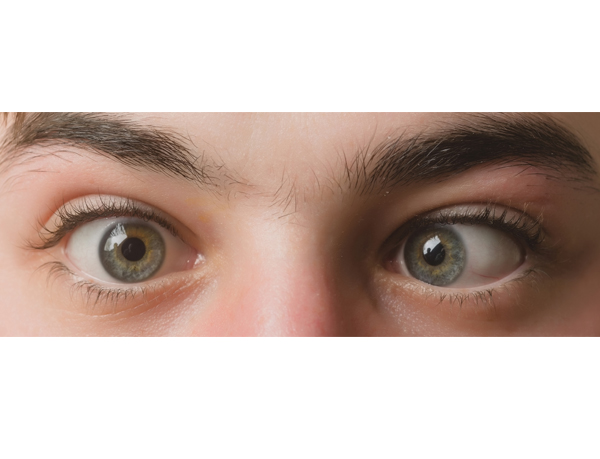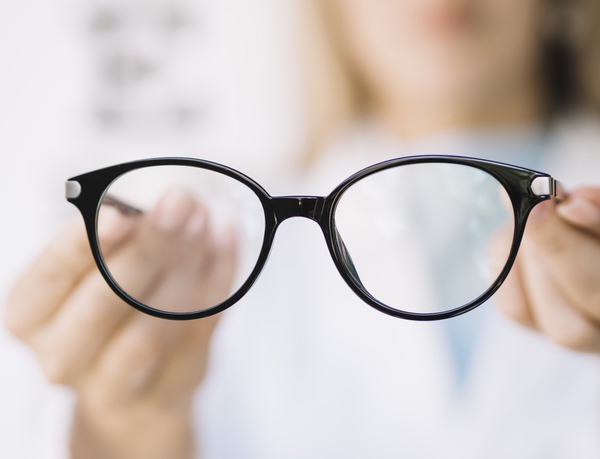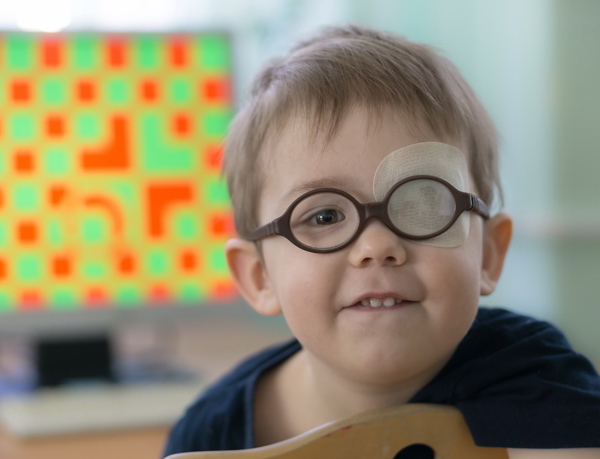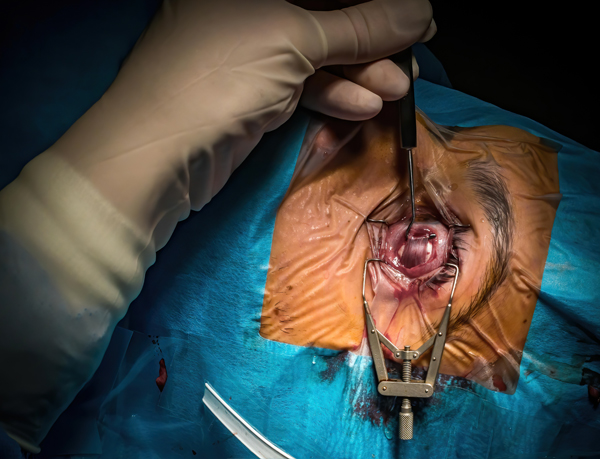Amblyopia – Lazy Eye

Amblyopia is caused if the visual pathway does not develop correctly in one eye since that eye isn’t able to transmit a clear image to the brain. It generally occurs in a child with a squint. This causes blurred vision in that eye even if the child is wearing the correct glasses. An eye which has amblyopia can be called an amblyopic eye or a "lazy" eye.
Sometimes amblyopia also occurs in children without a squint. This may be due to one or both eyes being particularly short-sighted (myopic), long-sighted (hypermetropic) and/or having a high astigmatism. Amblyopia can lead to a permanent reduction in vision.
There are multiple treatments for amblyopia and it is more successful when vision is still developing before the age of seven or eight. Unfortunately, amblyopia cannot be easily fixed in later life so it is very important that squints and amblyopia are detected and treated early in life.
A note of caution, Amblyopia if not treated in time can lead to permanent visual loss.
The objective to ensure that a squint is treated as soon as it is detected is to prevent amblyopia by ensuring that the vision in each of the eye develops normally. It will also help the two eyes work together so that binocular and 3D vision can develop as much as possible. To ensure the success of the treatment, it needs to be administered before the visual pathway development is complete i.e before the age of 7-8 years.
Most of these treatments are ongoing and they usually involve regular visits to the doctor for a number of years. The frequency of these visits are determined based on the factors such as the patient’s age, type of squint, and how well the body responds to the treatment. The type of treatment is also based on the type of squint. Mostly more than one treatment or a combination of treatments may be needed to get the best result for your child's vision.
Some of the most common ways that squint can be treated include:
- Glasses
- Occlusion therapy (patching)
- Exercises
- Surgery
- Botulinum Toxin Injections

As a first step, the child must be examined to assess the need of glasses. It is critical to have the child wear prescribed glasses to give them clear vision in both eyes. This will also help in preventing the squinting eye from becoming amblyopic or lazy. Most often the child with a squint will be recommended to wear glasses all the time.
Once the child starts wearing the prescribed glasses their squint becomes less prominent and eventually disappears completely. This type of squint is known as an accommodative squint. When the child takes off his glasses you will notice that his squint can be seen again. This further emphasis the need to wear the glasses all the time to correct the squint.
The child may also express initially that he can see better without the glasses. This is because his eyes have been working so hard to focus without glasses that now his eyes find it difficult to “relax” with the glasses. This usually settles once the child is wearing his glasses all the time.
Wearing the glasses all the time may be challenging at times, for example, when on the road and it’s raining or whilst swimming or whilst involved in a similar sport. Most of these can be overcome with the help of the optometrist and by learning how to take care of the glasses.

Occlusion therapy cannot straighten the eye, but can help in improving the vision in an amblyopic or lazy eye. Patching involves covering the good eye with a patch. This forces the child to use the weaker eye to see and therefore aids in building up the pathway between this eye and the brain. If this treatment is administered early enough in childhood, the vision can also be improved to a normal level.
If patching is recommended to a child who wears glasses then the patch should be worn underneath the glasses, so that the child doesn’t peep around the patch. Doctor’s instructions should be strictly followed on how often, for how long and when is the best time to wear the patch as this will vary from child to child.
Sometimes eye drops that blur the vision in the good eye are used as an alternative to a patch. This alternative may not be an option for all children and needs to be assessed and discussed with the ophthalmologist.
Certain kinds of squints can be treated with exercises. Exercises help in strengthening the ability of the eyes to work together. This type of treatment is usually helpful in older children with intermittent squints, and is normally used along with glasses and/or surgery.

Sometimes if the squint is very pronounced and doesn’t get corrected by using glasses then an operation on the eye muscles may be recommended to straighten the squint.
In some children who have had a squint from a very early age, early surgery helps line up the eyes so that they learn to work as a pair and may provide some 3D vision. This is generally if the child is about a year old.
In older children, surgery may be used only to make the eyes look straighter. It cannot improve the level of vision in a lazy eye, so glasses or patching may still be needed post the surgery.
Squint surgery is a day care procedure and usually performed under general anaesthesia so that the child doesn’t have to bear the pain.

Another line of treatment is a Botox injection that is used to weaken some of the eye muscles so that the eyes are better aligned. In children it is carried out under general anaesthesia. It is only recommended in certain types of squint, and in certain cases, for e.g. if someone has had several squint surgeries which have not aligned the eyes properly. The effect of Botox is usually temporary however it may be effective for some types of squints in children.


